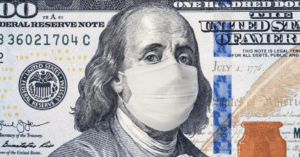
You could argue that our software is not the fanciest. You could argue we don’t have a huge feature set but you cannot argue with over 200 four and five-star reviews for ProcurementExpress.com on Capterra. The software comparison site tracks us along with all of our competitors on a range of issues and customer feedback is the most important. We are almost an order of magnitude ahead of our nearest competitors and in this article, I’ll share with you how we got there.
We achieved this many reviews mostly organically. We did everything that other customer success articles talk about including hiring the right people. The steps below outline how we are scaling the same boer maak ‘n plan (think outside the box or go to Plan B) attitude that got us here, to a much larger support team. Even if you don’t have a big team yet, this article will still help codify some of our best principles.
So what makes for the best customer service?
- Speed
- Availability
- Competence
- Humanity
- Patience
- Measurement
Speed
We handle most inquiries via online chat. The single biggest thing that you can do to improve your customer support experience is to be fast. Thirty seconds spent waiting for a chat response can feel like a lifetime. That is why response time has the single biggest impact on customer satisfaction. Sometimes, just being heard, is enough to deliver a wonderful experience. By contrast, having to type “is anybody there?” just makes the customer feel like they are being ignored. Which leads us to our next point;
Availability
Butchers, bakers and candlestick makers (well maybe not candlestick makers), but a lot of different types of companies use our software. They are all over the globe and work at all hours of the day and night. That means we need to be ready when they are. We do that by running three shifts from our office in South Africa. This might sound a little intimidating, but it needn’t be. It is possible to hire remotely. But in order to do so, you need a way to make sure new staff are competent.
Competence
The key to providing consistent service is being able to onboard new staff consistently. So how do you do that without bogging your best people down writing documents all day?
This is how.
There are three competencies that need to be covered.
- Product Knowledge
- Business Knowledge
- “How to put a smile on a customers face” Knowledge
Product knowledge is hard won. If you run a newer business, as we are, the product can change over time and in all likelihood, customer documentation was not top of mind when it did. The problem is that the people who know the product best are likely your most valuable sales, success, and engineering talent.
This is where video comes in. Grabbing a quick and dirty screencast on how to solve a customer problem, keeping that screencast in a spreadsheet, and having a technical writer turn it into something intelligible, is the fastest, easiest way to build a great set of documentation. The videos do not need to be released publically but they build up a complete list of your most common queries quickly.
The next step is to come up with a test for those frequently asked questions. When someone new comes onto the team, sit them down with the FAQ list, let them watch the videos and then test their knowledge.
Eventually, you can codify this process using a Learning Management System. We are using TalentLMS.
The FAQ and video list continually grow, making your documentation better and better. It is a relentless process that produces competent team members fast. This will cover both the product and business knowledge as the questions are based on real user queries.
Putting a smile on someone’s face might be less obvious. Step 1, speed certainly gets you most of the way there but there is one time-proven way to bring some humanity into what is otherwise a sometimes clinical process.
Humanity
Building a connection with customers is the single biggest thing you can do to reduce customer unhappiness and churn. Due to the nature of software, it is not always possible to technically achieve what the customer wants. It is always possible to let them know we did our best to get there. This is where online chat falls down. Text on a screen is cold. If we could, we’d go for a beer with our customers, but failing that, let’s get on the phone.
Some customers will be horrified by the prospect of having to talk to someone. Most won’t. In tech, it is sometimes easy to imagine a world where no-one has to talk to one another, but that is where real relationships are built. We offer every customer a chance to get on the phone with them to work through their queries.
This might sound like a time suck, but it ends up being a much more efficient way of solving a problem. A quick 5-minute call can often do what hours of emails, tickets, escalations and online discussions could never do.
It also makes us stand out as an organization. We know that many of the other services our customers use would never go to the effort of taking the time to call and fully understand a customer. That is why we do it and that is why our customers love us so much.
Patience
Customers can have a frustrating day. It’s not always the fault of our software when a customer comes to us with the temper of a bear.
We teach our support people to have patience. To listen to what the customer has to say and to make sure that we try to go above and beyond the customers’ expectations.
It is easy to become angry and defensive with a customer if they start the conversation with an angry footing.
You don’t beat or kick a new puppy that has made mistakes or chewed on the proverbial slipper. In the same way, we treat our customers with patience and listen to the problems that they are having, without being defensive.
Measurement
So far you may or may not have picked up a few ideas on how to deliver great customer support. This step is the step we have heard no-one else doing and puts the cherry on top of our world-class process.
US fighter pilots are amongst the most highly trained and skilled people in the world. They have a relentless approach to improvement that never ends.
If you want to put a plane on the deck of an aircraft carrier, the training never stops. Every single landing is graded by two of their team-mates. Angle of attack, speed, approach and, of course, not dying are all graded. The results go up on a “greenie board” in the ready room. For type-A pilots, this fuels competition and in some cases can lead pilots to lose their wings if they don’t cut the grade.
We use a similar system but for different reasons.
As each shift changes over, there is about a half hour overlap. That time is used to grade each customer interaction. This has two effects. Firstly it makes sure we are consistently dealing with customers to an excellent standard. Secondly, it makes sure the person on shift is fully briefed on what happened before them.
Here is what the scorecard looks like.
| Customer | |||
| Success Member | |||
| Date / Time | |||
| Question | Answer | Points | Score |
| Customer first responded to… | In 30 seconds | 20 points | |
| Less than a minute | 10 points | ||
| More than a minute | 0 points | ||
| Customer resolved from answer in the knowledge base | Yes | 10 points | |
| Answer not available in the knowledge base and added | Yes | 10 points | |
| Customer offered a phone call | Yes | 5 points | |
| Called customer | 15 points | ||
| Sales enquiry passed to sales team | 10 points | ||
| Bug identified and raised in Github as SLA2 / 1 | Yes | 20 points | |
| Customer Score | 1 star | 5 points | |
| 2 – 4 starts | 10 points | ||
| 5 stars | 20 points | ||
| Total | |||
If all of this sounds like work – you are right. It is a lot of work. Which is why it yields results.
How would you change our process? Is it over the top? Not fanatical enough? Let us know in the comments below.



